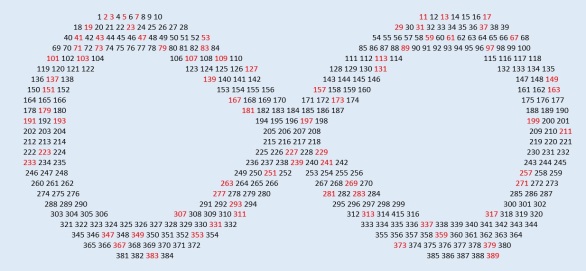Many an A-Level mathematician or physicist will be familiar with the concept of projectile motion, being the description of how an object with negligible mass travels if the only force acting on it is gravity. This is a rare situation to come across in real life, especially when the person carrying out these calculations only ever considers the world as a big flat plane, where a projectile has travelled its maximum horizontal displacement for any given angle and initial velocity is when its vertical displacement is zero. If we take a step into the real(ish) world we will be hard pressed to find a large, very flat plane, which is why I thought it would be interesting to consider a more wobbly plane.
To start with I will describe how basic projectile motions are calculated (so if you already know about this, you can skip this paragraph). Two facts are normally known with a projectile, its initial velocity, and its angle to the horizontal, shown by v and θ below.

From this we can break the velocity into its components. What we effectively have here is a right-angled triangle, and we know cos(θ)=adjacent/hypotenuse, so adjacent=v×cos(θ), and sin(θ)=opposite/hypotenuse, so opposite=v×sin(θ). This can be written in column vector form as below.

Because of the above specified conditions (negligible mass; no force bar gravity), there is no accelerating or decelerating force horizontally, and there is an accelerative force downwards at 9.8ms-2. At the furthest distance the vertical displacement equals zero, we know acceleration equals -9.8ms-2 and the initial velocity is vsin(θ) ms-1. To find the time for which the projectile travels we use the equation s=ut+0.5at² to obtain 0=t(vsin(θ)-4.9t). Thus t equals either 0 (when the projectile is at its start point) or vsin(θ)/4.9. Horizontally there is no acceleration, so the equation displacement equals velocity multiplied by time (s=vt) can be used, so the horizontal distance travelled equals v²sin(θ)cos(θ)/4.9.
This, however, is not the case if the plane is not flat, as the ground will be moving relative to the projectile, so the below equation needs resolving.

This equation seems a bit random, so we first need to know what all of the symbols stand for. α is the angle that the projectile is being fired at relative to the surface on which it sits (aka the tangent to the curve), θ is the angle of the surface relative to the horizontal (at the point of firing, where horizontal displacement equals zero), v is the initial velocity, and the function f(x) is the equation of the surface. x is the horizontal distance that needs resolving.

To find the angle θ we need to know the gradient of the tangent to the curve which touches the curve when x equals zero. To do this we simply find the derivative of the curve at zero, written as f´(x). A gradient is equal to the change in vertical (y) units divided by the change in horizontal (x) units, and tan(θ) is equal to opposite/adjacent in a right-angled triangle, or on the graph above the change in vertical units divided by the change in horizontal units, so tan(θ)=f´(x), so θ=arctan(f´(0)). Now that we know this we can work out the angle at which the projectile is fired relative to the horizontal: (α-arctan(f´(0)))º. We can split the initial velocity into components now:

As established velocity=displacement/time, so horizontally time=displacement/velocity, so t=x/(vcos(α-arctan(f´(0)))). Using the SUVAT equations of motion (specifically s=ut+0.5at²), we know that the vertical displacement equals vcos(α-arctan(f´(0)))t – 4.9t². Substituting in our equation for t in terms of x, v, and α we have (vcos(α-arctan(f´(0)))x)/(vcos(α-arctan(f´(0)))) – 4.9 (x/(vcos(α-arctan(f´(0))))², which can be written as:

The projectile will have landed when its vertical displacement is the same as the vertical displacement of the surface for the same value of x, so we just equate the above to f(x), then account for the fact that the projectile may not be ejected from a vertical displacement of zero by adding f(0) (the vertical displacement of the surface relative to the origin at zero displacement), and we can see how far the projectile goes.

